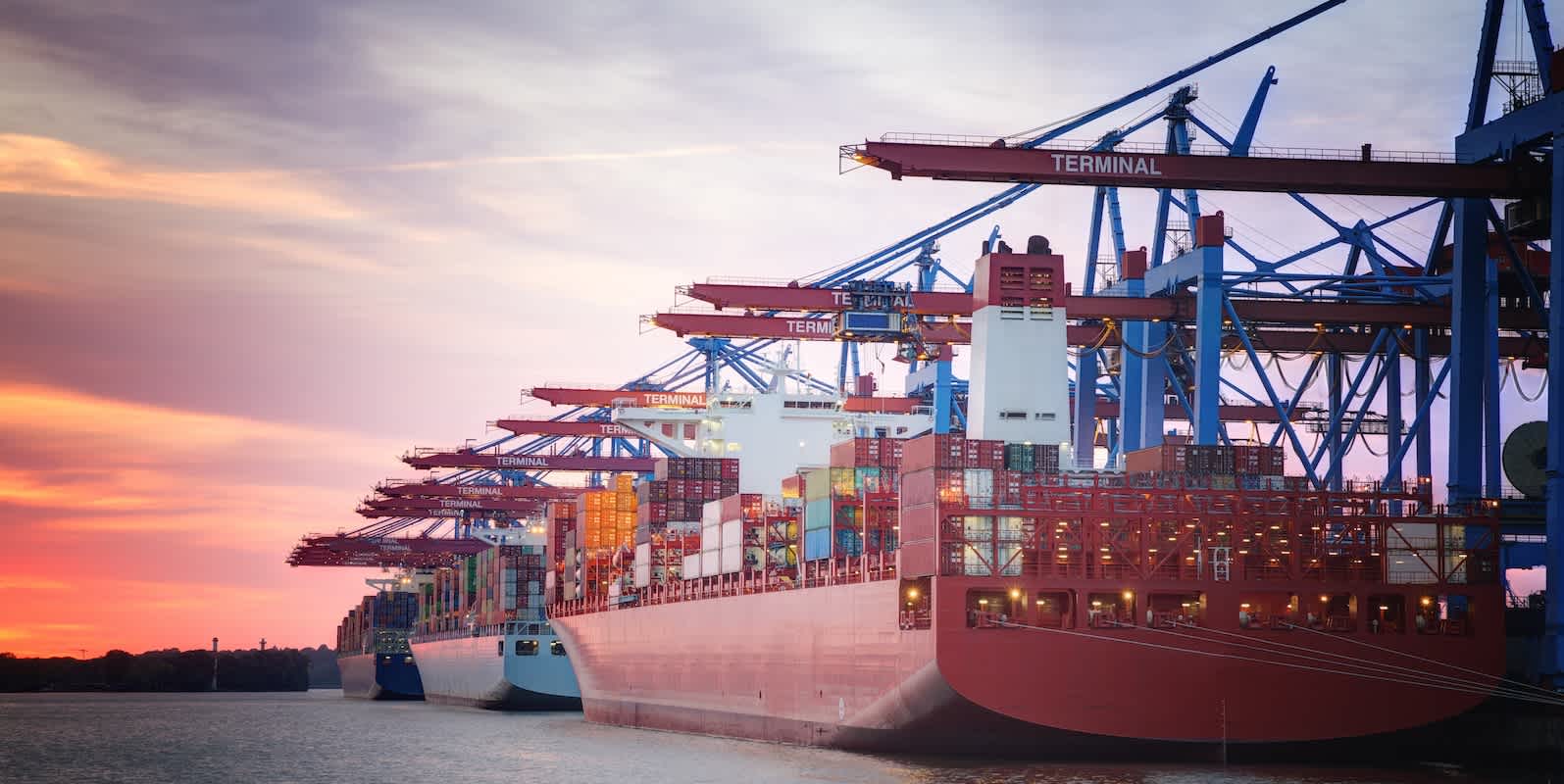
September 29, 2023
World Trade Indicators - Spinning Weathervanes
The tumult of the pandemic era has thrown off many measures for which way the economic winds are blowing, global trade being no exception. And discomfiting as it is when indicators are pointing in different directions, one reading for one month does not a trend make.

Earlier this week The Netherlands Bureau for Economic Policy Analysis (CPB) released its latest World Trade Monitor (WTM), which covers global merchandise trade volumes up to July where it estimates them having fallen 0.6% month-on-month and 3.2% compared to the same month in 2022. As a result, trade momentum – a measure of the current three-month average over the previous three-month average – also slowed 0.1 percentage point from the June reading to -0.4%.
Some of the immediate coverage read a pessimistic narrative into the release. And that narrative might prove justified: there are widespread expectations for an economic slowdown in the coming quarters as the long and variable lag of monetary policy could finally start to weigh on growth in many parts of the world. Global trade flows would likely suffer and this may be one sign of the beginning.
Or it may not. The narrative does not come from the CPB, which simply releases the numbers with sparse accompanying text describing only movements in the data. Nor is the WTM, as thorough as it is, the only indicator available for assessing the state of trade with a slight lag.
Others appear to paint a somewhat more optimistic picture.
Take The Kiel Trade Indicator from The Kiel Institute for the World Economy, a German think tank. It’s a ‘nowcast’ of sorts for world trade using machine learning algorithms to process shipping data in real time. Estimates are adjusted for prices and seasonality, as with the World Trade Monitor. The latest release puts month-on-month global trade flows up 0.9% in August. Unlike the WTM, it does not provide year-on-year or momentum measures, but does offer brief analysis of the results, noting resurgent Russian imports and late summer recoveries in the U.S., China, and the EU as reasons for the improvement.
Lagging the CPB and Kiel projections, and falling somewhere in between on sentiment, is the WTO’s Goods Trade Barometer. Published last in late August, the barometer indexes global trade in goods to the aggregate moving medium-term trend (=100) of six components: 1) new export orders; 2) an air freight index; 3) a shipping index of container throughput at major ports; 4) an auto sector index; 5) an electronics trade index; and 6) an index of trade in agricultural raw materials. The June reading was 99.1, or slightly below trend. But it was rising, largely on the strength of trade in autos. The other sub-components were either near trend or, in the case of trade in electronic components, well below it.
So where does this leave us? Another option is to track supposed bellwethers, which are closer to coincident than the above. The countries of choice here tend to be smaller, export-dependent economies that are integrated into global supply chains and that report their trade data the fastest. Singapore is one, both in terms of its non-oil domestic exports and – because it is a major transshipment hub – for its non-oil re-exports (NORX). Seasonally-adjusted non-oil domestic exports were down 2.4% month-on-month in August and 12.7% year-on-year; non-oil re-exports fell 1.8% and 8.5%, respectively, by the same measures, but momentum was still positive at 3.2%.
South Korea is probably the most cited by the media and analysts, however. It reports its full-month data the first day of the next month, i.e. September data is set to be released October 1st. It also, uniquely, publishes interim results for the first 20 days of each month. The August full-month data showed exports up 2.7% month-on-month and down 8.3% year-on-year, mostly due to declining shipments of semiconductors. But if we compare year-to-date exports through the first eight months of this year against the same period in 2019, they are up 13.4%; Singapore’s NORX are up 24.7% by that measure.
Finally, we have the forecasts. There are not as many of these for trade as one might expect. The WTO’s Trade Outlook, first released in the spring and updated in the fall, is the most watched. At present, it projects 1.7% global growth year-on-year in merchandise for 2023 and 3.2% in 2024. Flexport makes our forecasts for U.S. trade publicly-available and our current outlook is for imports to end the year down 2.5% compared to 2022, but for exports to increase by 3.8%. Our forecast for Euro area trade is set for an October launch.
There are headwinds, tailwinds and crosswinds for world trade. The near-term gusts are hard to ignore if only because the longer-term breezes are gentler. We shouldn’t ignore those, either, though.
Disclaimer: The contents of this report are made available for informational purposes only and should not be relied upon for any legal, business, or financial decisions. Flexport does not guarantee, represent, or warrant any of the contents of this report because they are based on our current beliefs, expectations, and assumptions, about which there can be no assurance due to various anticipated and unanticipated events that may occur. This report has been prepared to the best of our knowledge and research; however, the information presented herein may not reflect the most current regulatory or industry developments. Neither Flexport nor its advisors or affiliates shall be liable for any losses that arise in any way due to the reliance on the contents contained in this report.





